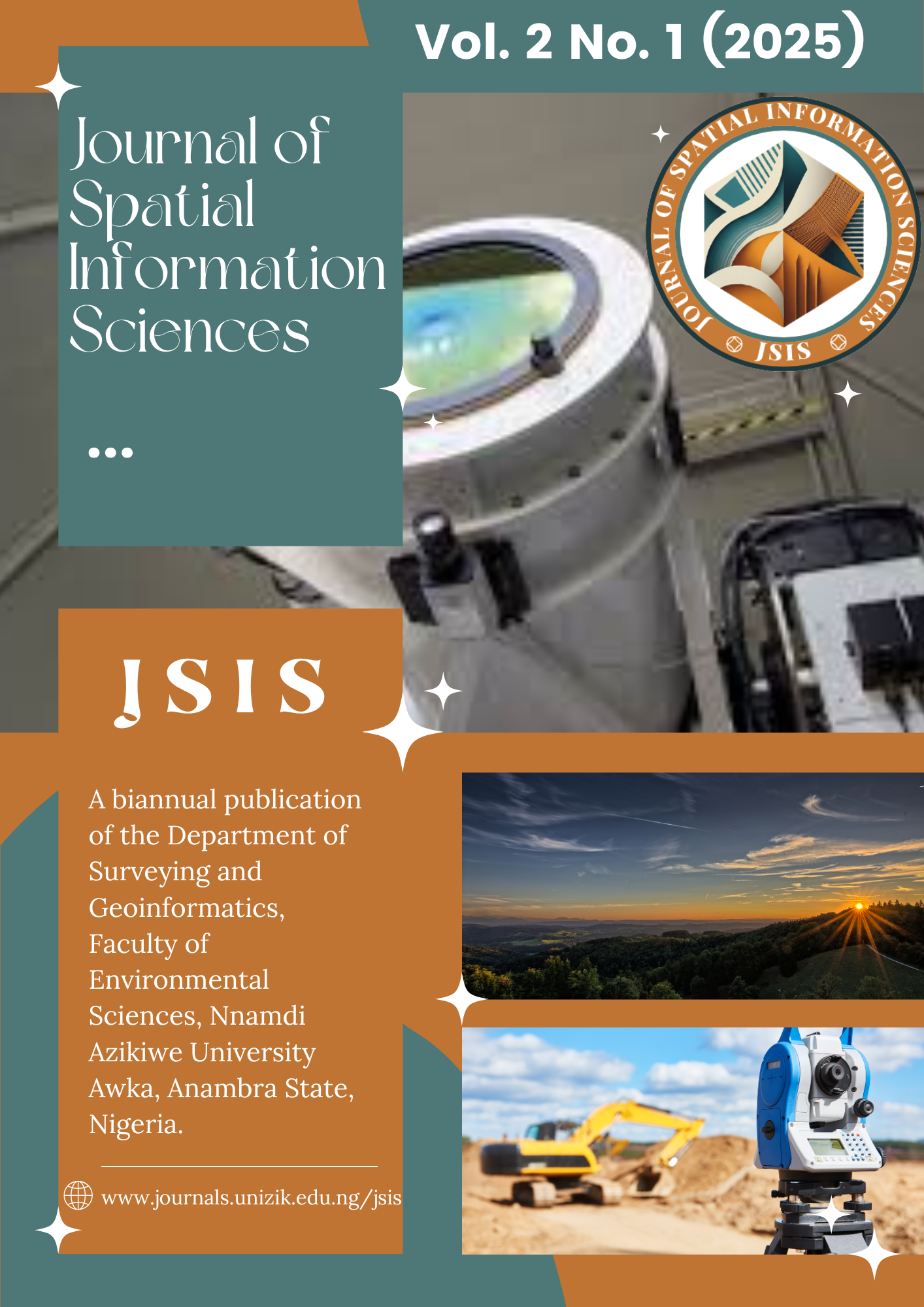Time Series Analysis of Wind Speed Variability over parts of the United Kingdom from Satellite Altimetry and Implications for Engineering Infrastructure
DOI:
https://doi.org/10.5281/zenodo.14808644Keywords:
Time Series Analysis, Climate Change, Wind Speed, Satellite Altimetry, Engineering InfrastructureAbstract
Wind speed is a potential source of wind energy of immense socio-economic benefits on one hand, and on the other hand, one of the climate change variables that has the capacity of causing disasters in open regions of the world, when not well understood, classified and mitigated. This study aims at the time series analysis of wind speed modulus (WSM) over selected cities in the United Kingdom and implications for engineering infrastructure. The ten (10) randomly selected locations include, London, Manchester, Nottingham, Glasgow, Bristol, Cardiff, Norwich, Canterbury, Newcastle Upon Tyne and Edinburgh. The global merged near real time satellite altimetry datasets of year 2013-2019 over the United Kingdom were used to examine the variability of the wind speed, and determine if its values are at the scale of storm or hurricane, or if poses critical risk and threat to specific engineering infrastructure in the selected locations across the UK. The months of April-June (parts of spring and summer seasons) showed a period of minimum WSM, while late November-February (winter season) showed a period of maximum wind speed values in the study area. The estimated minimum, average and maximum wind speed values for each location ranged between light breeze (scale 1) and fresh gale wind (scale 8) (i.e., between 0.5m/s and 20m/s). The average wind speed ranged from 6.93-7.8m/s; hence classified as moderate breeze (i.e., between 5.5 and 8 m/s). On the other hand, the maximum wind speed ranged from 16.9m/s -18.9m/s; hence classified as fresh gale wind, which can make walking against the wind direction very difficult during the wind event. The study revealed that, the WSM values were not at the scale of storm and hurricane (i.e., WSM of 28m/s – over 32m/s); hence considered not of critical risk and threat to average high-rise engineering buildings and infrastructure in the study area. The highest range of the dynamic force of wind load was about 2149N (2.15kN) recorded in Edinburgh, while the minimum force was about 6.13N (0.006kN) recorded in Canterbury. The computed dynamic force of wind load on hypothetical surface area of features and space in the selected locations is a relevant advisory information for resilience infrastructure designs, and in particular for wind farm feasibility planning and development in the study area. The linear regressions of the WSM in London against those of Edinburgh and Manchester showed excellent spatial correlations with R2 values of 92.14 % and 97.69% respectively, but with a better fit between London and Manchester than London and Edinburgh due to spatial contiguity. The study recommends the inclusion of analysed WSM metrics in the design, construction and management of critical engineering infrastructure in order to mitigate climate change-induced failures and enhanced life-span and safety of the infrastructure. The inherent potential of wind energy from wind speed should be exploited for sustainable renewable energy ecosystem in the UK.
References
Adjei-Darka, P. (2017). Remote Sensing and Geographic Information Systems for Flood Risk Mapping and Near Real-time Flooding Extent Assessment in the Greater Acrra Metropolitan Area. KTH Royal Institute of Technology, School of Architecture and Built Environment. Stockholm, Sweden.
Anderson, R. J., Hardy, E. E., Roach, J. T. and Witmer, R.E. (1976). A Land Use and Land Cover Classification System for Use with Remote Sensor. Geological Survey Professional Paper 964. United States Government Printing Office, Washington. pp. 1-28.
Bello, I. E., Adzandeh, A., and Rilwani, M. L. (2014). Geoinformatics Characterisation of Drainage Systems Within Muya Watershed in the Upper Niger Drainage Basin, Nigeria. International Journal of Research in Earth & Environmental Sciences. Vol.2 (3), pp.18-36.
Ekpa, A. U. and Ojinnaka, O. C. (2015). Near Shore Bathymetry Evaluation using Remote Sensing Method. Journal of Environmental Issues and Agriculture in Developing Countries, Volume 7, Number 2, August 2015 ISSN: 2141-2731.
Friend, P.F., Jones, N.E., Vincent, S.J. (2009). Drainage Evolution in Active Mountain Belts: Extrapolation Backwards from Present-Day Himalayan River Patterns, in: Fluvial Sedimentology. VI. John Wiley and Sons, Ltd, 305-313.
Gorokhovich, Y. and Voustianiouk, A. (2006). Accuracy assessment of the processed SRTM-based elevation data by CGIAR using field data from USA and Thailand and its Relation to the Terrain Characteristics. Remote Sensing of Environment. 104 (2006) 409 – 415.
Howard, A.D. (1967). Drainage Analysis in Geologic Interpretation: A Summation. American Association Petroleum Geologist Bulletin. V.51 No.11. pp-1246-2259.
Lillesand, T.M., Kiefer, R.W., Chipman, J.W. (2008). Remote Sensing and Image Interpretation: 6th Edition, Hoboken NJ. John Wiley and Sons. Hoboken.
Nelson S. A. (2015). Streams and Drainage Systems. Tulane University. pp 1-18. http://www.tulane.edu/~sanelson/eens1110/streams.htm
Pradhan, M. P., Ghose, M. K.,and Kharka, Y. R. (2012). Automatic Association of Strahler’s Order and Attributes with the Drainage System. International Journal of Advanced Computer Science and Applications. Vol.3, No.8. pp.30-34.
Qihao W. (2013), Introduction to Remote Sensing Systems, Data, and Applications. Remote Sensing of Natural Resources, ResearchGate. https://www.researchgate.net/publication/299708984
Qiuhong, T., Huilin, G., Hui, L., and Dennis, P. L. (2009). Remote Sensing: Hydrology. Progress in Physical Geography. 33(4). pp.490-509.
Twidale, C.R. (2004). River Patterns and Their Meaning. Earth-Science Reviews, 67(3-4), 159-218.
Udoudo, N. P., Ekebuike, A. N., and Ossai, E. N. (2023). Hydrographic Mapping of Coastal Area of Ibeno LGA of Akwa Ibom State of Nigeria using Remote Sensing Method. International Journal of Progressive Research in Science and Engineering. Vol.4 No.07, pp. 27-33.
Udoudo, N. P., Ekebuike, A. N., Nwopi, T. C., Agulonu, A. K. (2024). Stream Order and Flow Pattern Assessment in Awka North and South LGAs of Anambra State of Nigeria using Shuttle Radar Topographic Mission (SRTM) and Satellite Imageries. Environmental Review Journal Vol. 9 (3). pp. 165-172.
Ward, R. C. and Robinson, M. (2000). Principles of Hydrology. 4th Ed. McGraw-Hill. UK.
Downloads
Published
Issue
Section
License
Copyright (c) 2025 L. M. Ojigi, Y. W. Ochieng

This work is licensed under a Creative Commons Attribution-ShareAlike 4.0 International License.





